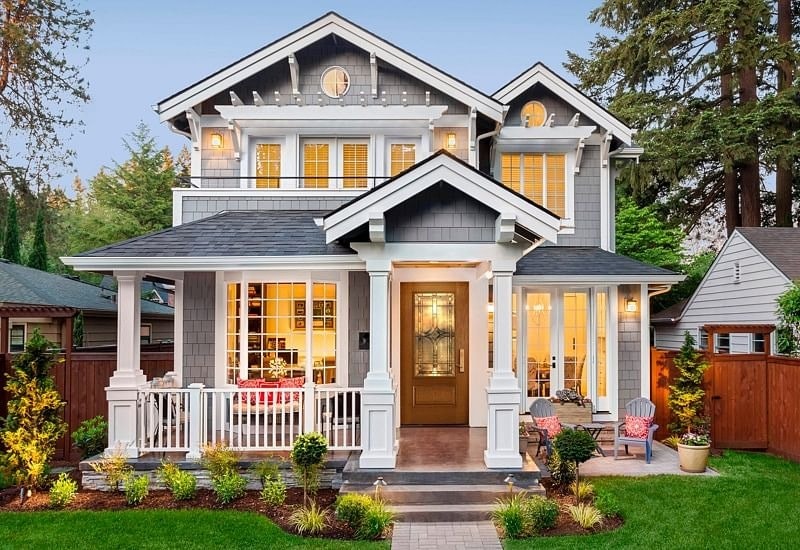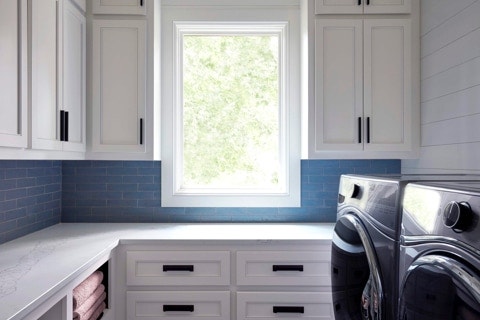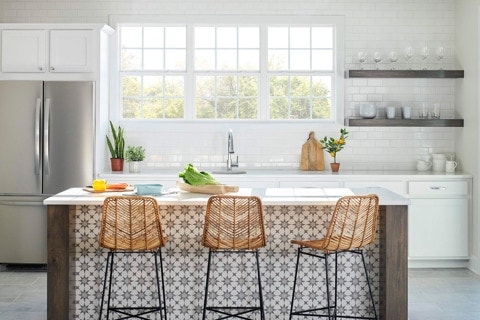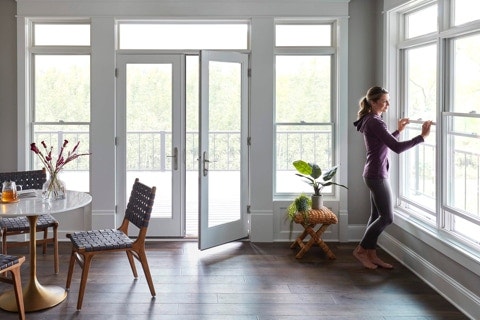What to Look for When Buying a House (That You Might've Overlooked)
Posted
on November 22, 2023

Popular shows like “House Hunters” often reveal a common thread in the must-have lists of homebuyers: hardwood floors, open floor plans for entertaining, spacious yards, luxurious master bathrooms, and chef-worthy kitchens. Each of these features can make a house seem like a perfect choice at first glance. However, purchasing a home is a significant life decision that warrants careful consideration; especially in today’s real estate market. It’s essential to ensure your prospective home meets your needs, not just your wants. Not sure what to look for in a house when buying? Our checklist of often-missed details is here to help you find the right home.
The House Hunting Checklist for Finding a Home That Checks All the Boxes:
Sellers and their real estate agents are savvy. They go to great lengths to make their houses appealing by tidying up, fixing any issues, decluttering, and incorporating the latest design trends. Eager sellers go through the trouble of tackling home renovations to make a more significant impact on you or swap out their style for the latest home design trends.
These updates undoubtedly enhance visual appeal and make a home move-in ready. However, beyond the cosmetic glamour, there are crucial aspects that many homebuyers tend to overlook during their house hunts.
Things to Look for When Buying a House
Here are some essential items to include in your house-hunting must-haves checklist:
1. The Best House Location
You can change nearly everything about your home except for one crucial element: its location. While most homebuyers consider the neighborhood’s proximity to work, friends, good schools, or their love for a particular area of the city, there are several factors to contemplate when determining the best location for your future home:
- Proximity to retail: Consider places you visit outside your daily routine. Is the nearest grocery store, big box store, or hardware store conveniently located? Is there a nearby branch of your bank? Calculate how long it would take to run errands or make an emergency trip to the store for household essentials.
- Transportation: Analyze your daily commute. If you use your own car you’ll want quick access to highways and main roads. If you rely on public transportation, identify the nearest bus or train stop and check that pickup times fit your schedule. Assess whether the house is close enough to walk or bike to work and consider access to sidewalks, bike lanes, or trails so you can get to and from work safely.
- Site of the house: Scrutinize the lot and the house’s positioning on it. Which direction does the house face? How close are the neighbors and do their windows directly overlook your potential home? Check the view from every window to find any potential privacy issues. Assess whether the house sits on a slope or a hill and consider whether the grade is too steep to walk or add future outdoor features. Walk around the property to find obstacles that may affect your home maintenance and future enhancements.


2. Home Storage Space
When buying a home, it’s natural to focus on the layout and how your home will be presented. It’s equally important to consider storage space for items you keep out of sight. After you make sure the closet in the master suite can hold all your clothes, explore the other closets and storage areas in the house and take an inventory:
- Determine the number and location of all closets, such as the front entrance, under the stairs, or in hallways.
- Examine bathroom and kitchen storage and cabinets.
- Check for a dedicated mudroom or laundry room.
- Is there an attic or large storage room in the basement?
- Assess whether the garage has enough space to fit family vehicles, bikes, kids’ toys, lawnmowers, tools, and everything else that you accumulate in homeownership.
- Consider whether there is a shed or room to build one on the property if the need arises in the future.
Insufficient storage space for your belongings can cause a challenge in finding creative storage solutions after move-in. Something as simple as a convenient place to store your vacuum can be invaluable.
3. An Ideal Kitchen Triangle
While beautiful cabinets, granite countertops, kitchen islands, and open space for entertaining often appear on a homebuyer’s “must-have” list, these features do not necessarily contribute to the kitchen’s primary purpose: preparing meals. The kitchen work triangle is a concept to determine the most functional and efficient layout. The sink, refrigerator, and stove make up the corners of the triangle, as those are the three primary work centers for most tasks. The National Kitchen and Bath Association provides recommendations on the ideal kitchen triangle layout:
- Total distance between workstations should not exceed 26 feet.
- The distance between work centers — known as the legs of the triangle — should fall between four and nine feet.
- Legs of the work triangle should not cross an island, peninsula, or other obstacle by more than a foot.
- No major traffic patterns should intersect the triangle.
Bring along measuring tape and record the dimensions of the kitchen setup. A kitchen too spacious may hinder cooking and entertaining, while one that is too small can lead to clutter and congestion during mealtimes.

4. Amount of Natural Light in the House
Most open houses are on Sundays, but what you want is a sunny day. Consider scheduling a visit to the house when the sun is shining and take note of how the light hits each room. You may even want to schedule a second visit at a different time of day. Pay attention to the natural light provided by the windows, doors, and patio doors to determine whether it’s sufficient. You’ll also want to make note of the window types and functionality, determine whether there are enough light fixtures in darker rooms, and evaluate for conveniently-located electrical outlets for future needs.
Think through your lighting plan. Consider which way the windows face and the amount of heat and sunlight that will be in each room throughout the day. South-facing windows receive the most sunlight so if you prefer well-lit spaces you may want your family room, home office, or master bedroom on the south side of the home. If the house seems dim, explore opportunities to add or replace windows to increase natural light or other means of improving lighting.
While considerations like location, storage, triangles, and lighting may not seem as glamorous or exciting as outdoor living spaces or modern upgrades, they have a profound impact on your daily life. Paying attention to these overlooked details can prevent unpleasant surprises down the line or worse — buyer’s remorse.
What to Look for in a House When Buying
Little details are the keys to a home that not only meets your wants but also fulfills your needs. Remember that the little things can add up to a significant impact on your daily life, so being mindful of them during the homebuying process is crucial.
- Location
- Storage Space
- Kitchen Layout
- Natural Light
When embarking on the journey of buying a house, it's vital to focus on the essentials that truly matter for your long-term comfort and convenience.
Schedule a free consultation to find windows and doors for your home.
